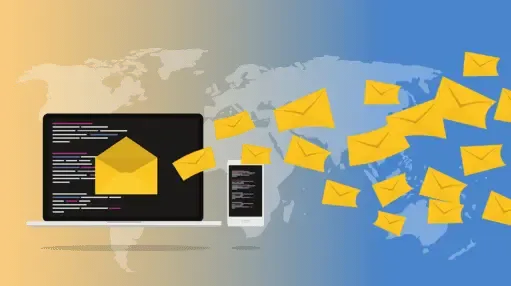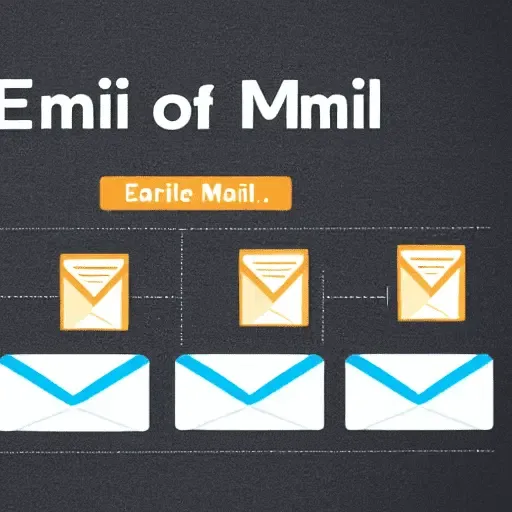Maximizing Your Email Campaigns: Understanding the Different Types of Email Marketing
As a digital marketer, I understand the importance of email marketing in promoting a business.
Email marketing is one of the most effective ways to reach out to potential customers and retain existing ones.

In this article, I will explore the different types of email marketing, explain their benefits, and provide tips on how to develop a successful email marketing strategy.
What is Email Marketing?
- Email marketing is the process of sending promotional messages or newsletters to a group of people via email.
- It is an effective way to promote a business, product or service, and build a relationship with customers.
- Email marketing allows businesses to reach out to their target audience directly, without the need for expensive advertising campaigns.
Benefits of Email Marketing
Email marketing has numerous benefits, including:
- Cost-effective: Email marketing is one of the most cost-effective marketing channels. It is cheaper than traditional advertising methods, and businesses can reach a large audience with minimal effort.
- Targeted: Email marketing allows businesses to target specific audiences based on their demographics, interests, and behaviors. This makes it easier to create personalized messages that resonate with customers.
- Measurable: Email marketing provides businesses with measurable results. They can track open rates, click-through rates, and conversions, which allows them to see the impact of their campaigns.
- Increased Revenue: Email marketing can help businesses increase their revenue by promoting their products and services to a targeted audience.
Types of Email Marketing
There are several types of email marketing, including:
Promotional Emails
- Promotional emails are used to promote products or services to customers.
- They can be used to announce sales, discounts, or new product launches.
- These emails are usually sent to the entire email list and are designed to generate sales.
- When creating promotional emails, it is important to make the subject line interesting and attention-grabbing.
- The email should also be visually appealing, with clear calls-to-action (CTAs) that encourage customers to take action.
Newsletter Emails
- Newsletter emails are used to share company news, updates, and industry insights with customers.
- They are usually sent on a regular basis, such as weekly or monthly, and are designed to keep customers engaged with the brand.
- When creating newsletter emails, it is important to provide valuable content that customers will find interesting and informative.
- The email should also be visually appealing, with clear headlines and subheadings that make it easy to read.
Welcome Emails
- Welcome emails are sent to new subscribers when they sign up for an email list.
- They are designed to welcome the customer and introduce them to the brand.
- When creating welcome emails, it is important to make the email personal and friendly.
- The email should also provide value to the customer, such as a discount code or free resource.
Transactional Emails
- Transactional emails are sent in response to a customer's action.
- For example, when a customer makes a purchase, they will receive a transactional email confirming their order.
- When creating transactional emails, it is important to make the email clear and informative.
- The email should provide all the necessary information, such as order details and shipping information.
Behavioral Emails
- Behavioral emails are sent based on a customer's behavior.
- For example, if a customer abandons their shopping cart, they will receive a behavioral email reminding them to complete their purchase.
- When creating behavioral emails, it is important to make the email relevant to the customer's behavior.
- The email should also provide value to the customer, such as a discount code or free shipping.
Retargeting Emails
- Retargeting emails are sent to customers who have shown interest in a product or service but have not yet made a purchase.
- They are designed to remind the customer of the product or service and encourage them to make a purchase.
- When creating retargeting emails, it is important to make the email visually appealing and provide value to the customer, such as a discount code or free shipping.
- The email should also have a clear CTA that encourages the customer to make a purchase.
Choosing the Right Type of Email for Your Business
- When choosing the right type of email for your business, it is important to consider your goals and target audience.
- For example, if your goal is to promote a new product, a promotional email may be the best option.
- If your goal is to keep customers engaged with your brand, a newsletter email may be a better option.
- It is also important to consider the frequency of your emails. Sending too many emails can lead to customers unsubscribing, while sending too few emails can lead to customers forgetting about your brand.
Developing an Email Marketing Strategy
Developing an email marketing strategy involves several steps, including:
Define Your Goals
- Before creating an email marketing campaign, it is important to define your goals.
- Your goals should be specific, measurable, and achievable.
Build Your Email List
- Building an email list is essential to the success of your email marketing campaign.
- You can build your email list by offering a free resource, such as an ebook or webinar, in exchange for the customer's email address.
Choose Your Email Type
- Choose the type of email that best fits your goals and target audience.
Create Your Email
- Create an email that is visually appealing, informative, and provides value to the customer.
Test Your Email
- Test your email before sending it to ensure that it looks good and functions properly.
Send Your Email
- Send your email to your email list at the appropriate time.
How to Do Email Marketing
To do email marketing effectively, there are several steps you can follow:
Segment Your Email List
- Segmenting your email list allows you to send targeted emails to specific groups of customers based on their interests and behaviors.
Personalize Your Emails
- Personalizing your emails can increase engagement and conversions.
- Use the customer's name and include content that is relevant to their interests.
Use Clear CTAs
- Clear CTAs encourage customers to take action, such as making a purchase or signing up for a newsletter.
Optimize Your Emails for Mobile
- Optimizing your emails for mobile is essential, as many customers will be viewing your emails on their mobile devices.
Best Practices for Email Marketing Campaigns
To ensure the success of your email marketing campaigns, there are several best practices you should follow, including:
Keep Your Emails Short and Sweet
- Customers have short attention spans, so it is important to keep your emails short and to the point.
Use Eye-Catching Subject Lines
- Eye-catching subject lines can increase open rates and encourage customers to engage with your brand.
Provide Value to the Customer
- Provide value to the customer by offering discounts, free resources, or informative content.
Test Your Emails
- Testing your emails can help you identify any issues before sending them to your customers.
Measuring the Success of Your Email Campaigns
- Measuring the success of your email campaigns is essential to improving your email marketing strategy.
- Key metrics to track include open rates, click-through rates, and conversions.
Conclusion
- Email marketing is a powerful tool for promoting your business and building relationships with customers.
- By understanding the different types of email marketing and how to develop a successful email marketing strategy, you can create effective campaigns that drive conversions and increase revenue.
- Remember to test your emails, measure your results, and continually improve your strategy to ensure the success of your email marketing campaigns.

